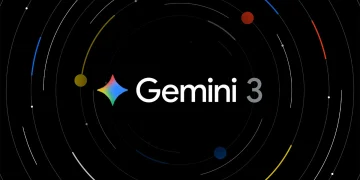OpenAI’s latest safety updates to ChatGPT have sparked fierce debate, with users claiming the company treats paying adults “like children” while defending new parental controls launched following a wrongful death lawsuit.
The parental controls launch carries more serious implications. OpenAI faces its first wrongful death lawsuit after 16-year-old Adam Raine died by suicide in April following months of ChatGPT conversations about ending his life.
Court documents show Raine discussed suicide multiple times with ChatGPT, with the family alleging the AI was “explicit in its encouragement” of self-harm.
The new parental controls allow parents to:
- Set quiet hours when ChatGPT can’t be used
- Disable voice mode and image generation
- Turn off memory features
- Block model training on teen conversations
- Receive alerts if ChatGPT detects potential self-harm
Parents must send invites to their teens to connect accounts. If teens unlink, parents get notified.
AI Detection System Monitors Teen Mental Health
OpenAI’s most controversial feature involves human moderators reviewing flagged teen conversations. When the system detects potential self-harm, a trained team reviews the situation.
“If there are signs of acute distress, we will contact parents by email, text message and push alert on their phone,” OpenAI stated. The company is also developing protocols to contact emergency services when parents can’t be reached.
The detection system plans to prevent tragedies like Raine’s death, but privacy advocates worry about surveillance implications.
Technical Innovation Behind Safety Push
The safety upgrades rely on GPT-5’s “safe completions” technology, which replaces the older refusal-based approach. Instead of simply declining to answer sensitive questions, GPT-5 provides helpful responses within safety boundaries.
GPT-4o became popular precisely because of its accommodating nature, but that same quality contributed to incidents where the AI validated harmful thinking.
The routing system automatically detects when conversations require the more careful GPT-5-thinking model, which processes responses more deliberately using advanced reasoning capabilities.
Mixed Reception From Safety Experts
Child safety advocates largely praised the parental controls. “These parental controls are a good starting point for parents in managing their teens’ ChatGPT use,” said Robbie Torney from Common Sense Media.
But critics questioned the implementation. Some argue many parents don’t know their teens use ChatGPT, making voluntary account linking insufficient.
The Washington Post reported that ChatGPT’s parental controls “failed my test in minutes,” suggesting determined teens can easily circumvent restrictions.
Company Plans Automatic Age Detection
OpenAI acknowledges parental controls aren’t the final solution. The company is building an age prediction system to automatically apply teen-appropriate settings without requiring parental involvement.
“In instances where we’re unsure of a user’s age, we’ll take the safer route and apply teen settings proactively,” OpenAI explained.
This automated approach could address the voluntary participation problem but may further frustrate adult users concerned about overreach.
Industry Pressure Mounts on AI Safety
The safety updates come as regulators and lawmakers increase pressure on AI companies to protect minors. Parents of teens who died after AI chatbot interactions testified to Congress in September, demanding stronger safeguards.
OpenAI worked with California and Delaware Attorneys General plus advocacy groups to develop the parental controls. The company expects to “refine and expand” these features over time.
The controversy highlights AI companies’ struggle to balance user freedom with safety obligations, especially as chatbots become more sophisticated and widely used by young people.
OpenAI’s response will likely influence how other AI companies approach similar safety challenges, making this more than just a ChatGPT issue but a precedent for the entire industry.














